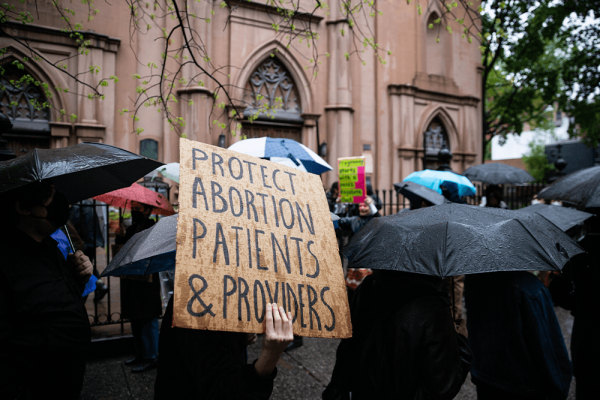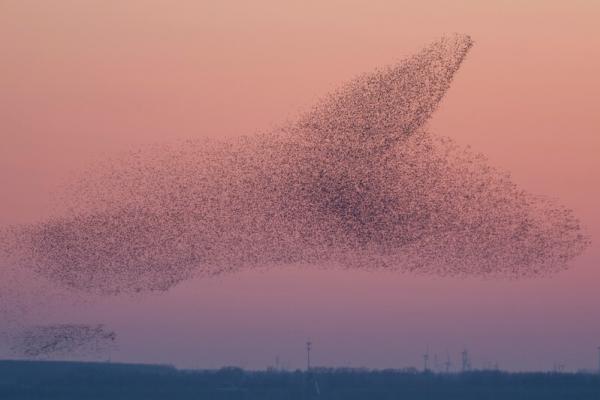After the June 2022 Supreme Court ruling in Dobbs v. Jackson Women’s Health Organization which overturned Roe v. Wade, the landscape of abortion access in the U.S. shifted dramatically. In the past year, many Republican state governments have moved to further restrict or fully outlaw abortion, while some states with Democratic legislatures and/or governors have written abortion protections into law. In every state, pregnant people face difficult decisions and shifting barriers to receiving abortion care.
One year after the Dobbs decision, here’s what we know about abortion availability across the U.S. and the role of faith leaders and activists in the lives of pregnant people.
What does abortion access look like across the country? How has this impacted the number of abortions?
The Dobbs decision leaves abortion legality up to each state. In 13 states, trigger laws went into effect, banning abortion as soon as Dobbs was decided. Several states have adopted or added new laws limiting abortion since then. Overall, 17 states have pursued near-total or total abortion bans. In 14 states, these bans are already in effect; though some are facing legal challenges and not in effect. So far, total bans are in effect in 14 states, while South Carolina, Wyoming, Wisconsin, and Florida have active court cases stalling their abortion bans. Georgia bans abortion after six weeks, which makes it exceptionally difficult to get an abortion.
Have these new laws changed the number of abortions performed in the U.S.? It’s hard to say. Collecting data on abortions was already challenging before Dobbs, and experts say that real numbers will be even more difficult to get going forward because those with resources to do so are traveling outside their state, and others have been able to self-manage abortions through telemedicine and underground networks.
For example, Texas reports no abortions in many of the months since state restrictions ended nearly all abortion access 10 months before the Supreme Court struck down Roe. But people needing abortions can still travel out of state or self-manage an abortion with medication received by mail — though lawmakers in several states are trying to restrict those options as well. Wyoming passed a law explicitly banning the use of abortion pills; in April, Idaho made it illegal to transport a pregnant minor out of state for an abortion.
How have Christians been involved in increasing or decreasing abortion access?
Religious opposition to abortion is well-known, and many faith groups have supported legislation limiting abortion. Less widely known are the groups building on a long history of Christians’ support for people seeking abortions.
Before the 1973 ruling in Roe v. Wade, information about abortion was difficult to find, so a nationwide network of clergy and rabbis known as the Clergy Consultation Service helped women connect to safe abortion providers. That group is now the Religious Coalition for Reproductive Choice (RCRC), and it continues to provide up-to-date information for people in abortion-restricted areas, as well as spiritual support for abortion providers and seekers. Some churches have created rituals and services where community members can share abortion stories and receive support. Even before the Supreme Court decision last year, RCRC worked with Faith in Women, a Mississippi-based reproductive rights group, and created an online spiritual support resource called Abortions Welcome.
“We wanted to have something in place for people who might not have a supportive faith community,” Katey Zeh, CEO of RCRC, told Sojourners.
Some clergy have been inspired to argue for their rights to receive or support abortion care as part of their religious practice. Religious leaders have been filing lawsuits, claiming that abortions restrictions violate the First Amendment as they restrict religious traditions that support abortion access.
What churches, denominations, and other religious traditions have official stances for or against abortion?
Catholic leaders have been historically consistent opponents of abortion in the United States, and in the latter part of the 20th century were joined by many conservative Protestant traditions. The United States Conference of Catholic Bishops celebrated the Dobbs decision, as did many clergy in conservative Protestant denominations. Among all Catholics, however, views are evenly split on whether abortion should be legal or illegal in most/all cases, according to Pew Research Center polling.
Other Christian denominations maintained nuanced stances on abortion, while voicing support for women’s health care, including necessary abortion care. The Episcopal Church and Evangelical Lutheran Church in America both issued statements of concern about the Dobbs decision, and expressed support for women seeking abortions.
Polling shows Unitarian Universalists to be the faith tradition most supportive of broad abortion rights, in keeping with the denomination’s support for abortion rights. The Presbyterian Church (USA) also has an active history of support for abortion rights.
What do we know about Christian attitudes on abortion and how they compare to the rest of the U.S.?
Support for abortion access has not changed drastically in the last year, according to national surveys. The percentage of Americans who say abortion should be legal in most or all cases has remained steadily around 65 percent according to the Public Religion Research Institute. However, the percentage of survey respondents who said abortion should be illegal in all cases declined from 11 to 7 percent between 2021 and 2022.
There’s a lot of middle ground between a total ban and full legality. Without federal abortion rights, it’s likely more people in the past year encountered the kind of complicated situations — including slow miscarriages with potential for sepsis or pregnancies with severe fetal abnormalities— that lead many women to seek an abortion.
White evangelicals continue to be the religious group most opposed to legal abortion, and those views held steady throughout the year. Also unique to white evangelicals was a majority of respondents who said that if the country shared their religious beliefs, it would solve the abortion debate. The only religious groups with a notable change in their support for abortion were Hispanic Catholics and Black Protestants, who both grew more supportive of abortion rights in the second half of 2022, according to the Public Religion Research Institute. PRRI did find a 9-15 point increase in support for legal abortion in “all” cases, nearly matching the 8-10 point drop in those who said it should be legal in “most” cases. It’s not possible to know if individual people are sliding toward a more supportive stance, as it appears, or if the data reflects more nuanced changes across the spectrum of opinions. Survey results also include a margin of error, and results can change based on how the question is asked.
How do markers of maternal and child wellbeing compare in states with most and least severe abortion restrictions?
Post-Dobbs data isn’t readily available on the usual markers for maternal and child wellbeing, which include children living in poverty, uninsured rates, maternal and infant mortality rates, and other factors. But according to 2021 data, there was a consistent overlap between states that have taken steps to increase health care access for women and children generally, and states that went on to maintain or expand abortion access without Roe.
After the Dobbs decision, the Gender Equity Policy Institute grouped all 50 states into three categories of abortion rights: supportive, restrictive, and banned. It found that maternal mortality rates in “banned” states were twice the rate of “supportive” states before the pandemic, and nearly two-and-a-half times the rate by 2021. Many “banned” states already had restrictions on abortion access and reproductive health care, which led to a body of research showing that restrictions to reproductive health care lead to increases in maternal mortality.
Indigenous and Black women are more likely than white women to die during or after childbirth; among white women, those with lower incomes are more likely to die. The fact that income is not an indicative factor for Black women signals that “systemic issues” contribute to maternal mortality and morbidity, said Craig Wilson, policy director of the Arkansas Center for Health Improvement.
States the Institute ranked “supportive” of abortion rights have all expanded Medicaid under the Affordable Care Act. Of the 10 states that have not expanded Medicaid, nine have or are currently pursuing total abortion bans.
Of the 17 states with the most severe abortion restrictions, nine are in the bottom quartile of child well-being, according to the Annie E. Casey Foundation’s Kids Count Databook, which looks at child poverty, educational attainment, parent employment, children’s health insurance coverage, birth weight, child and teen deaths, and more.
This correlation between severe abortion restrictions and maternal mortality “speaks to something broader about what resources and services are available to the people who live there so that they can live lives of flourishing,” Zeh said. “It’s never been just about the right to an abortion. It’s been about human dignity.”
Got something to say about what you're reading? We value your feedback!








